Afya Moja: Engaging Communities in One Health in Laikipia, Kenya
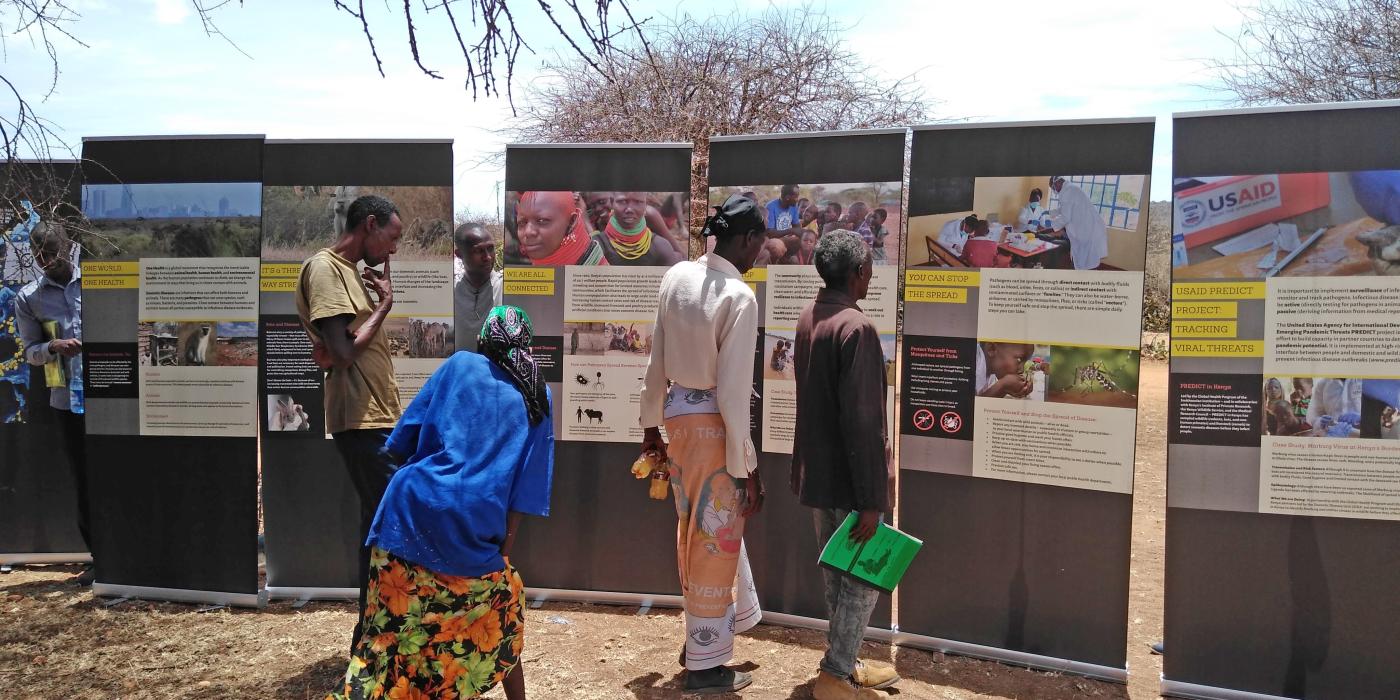
Scientists sometimes get a bad rap for being too data-driven, too objective, or analytical and clinical to the point of aloofness. But today’s researchers recognize that a purely data-driven approach can be counterproductive to building sustainable solutions to wide-ranging problems.
In our fields of research, there can be no conservation and no public health security without buy-in from local stakeholders. When it comes to public health, that means the community. Our holistic health is not just the responsibility of the individual; it also depends on the collective efforts of a society. Thus, public health security relies on engaging communities in safeguarding their own public health and well-being.
Education is often touted as the answer to large-scale issues like health security. But what does this actually look like on the ground?
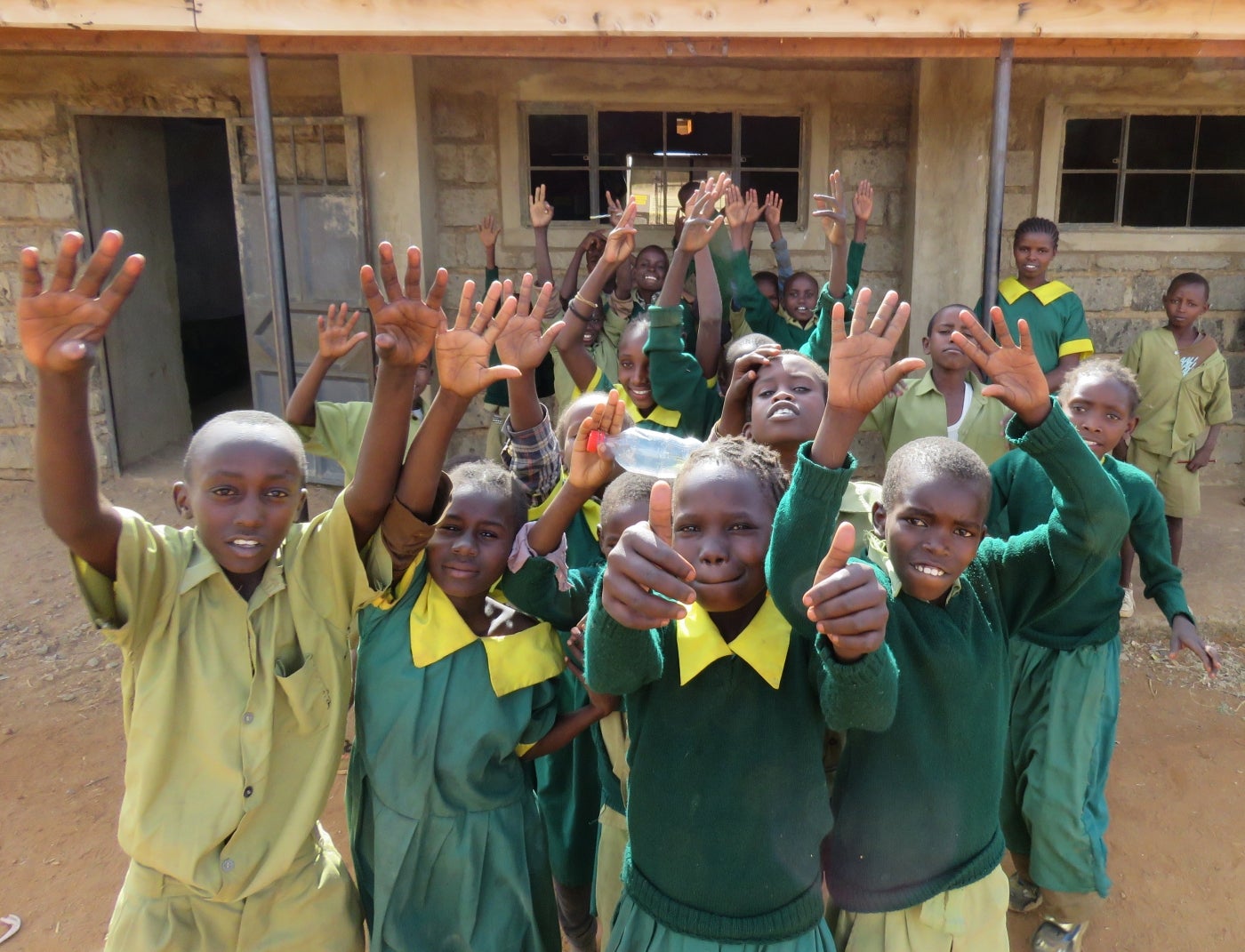
A group of primary school students in Laikipia, Kenya.
In late March, graduate student Liz Ashby and I traveled to Laikipia County in Kenya. We were there to participate in community engagement and education activities organized as part of the USAID Emerging Pandemic Threats PREDICT project, a viral detection and surveillance project.
Animals sometimes carry diseases that can affect humans, called zoonotic diseases. The PREDICT project aims to detect these viruses in wildlife (like bats, rodents and nonhuman primates) and in domestic livestock (like camels) before they can pass on to people.
Scientists collect biological samples, such as blood and saliva, from these different animals to test for zoonotic diseases. Samples are also collected from people in targeted rural communities where exposure to animals is common and access to health resources is limited.
At the time of our visit, animal and human sampling activities had already been completed. This second part of the project involved reaching out to the communities at sampling sites to raise awareness of infectious diseases that can spread from animals to humans. We also discussed behaviors that might lead to a greater risk of disease transmission — such as the consumption of raw meat or milk, or certain sanitation and hygienic practices — as well as strategies to reduce that risk.
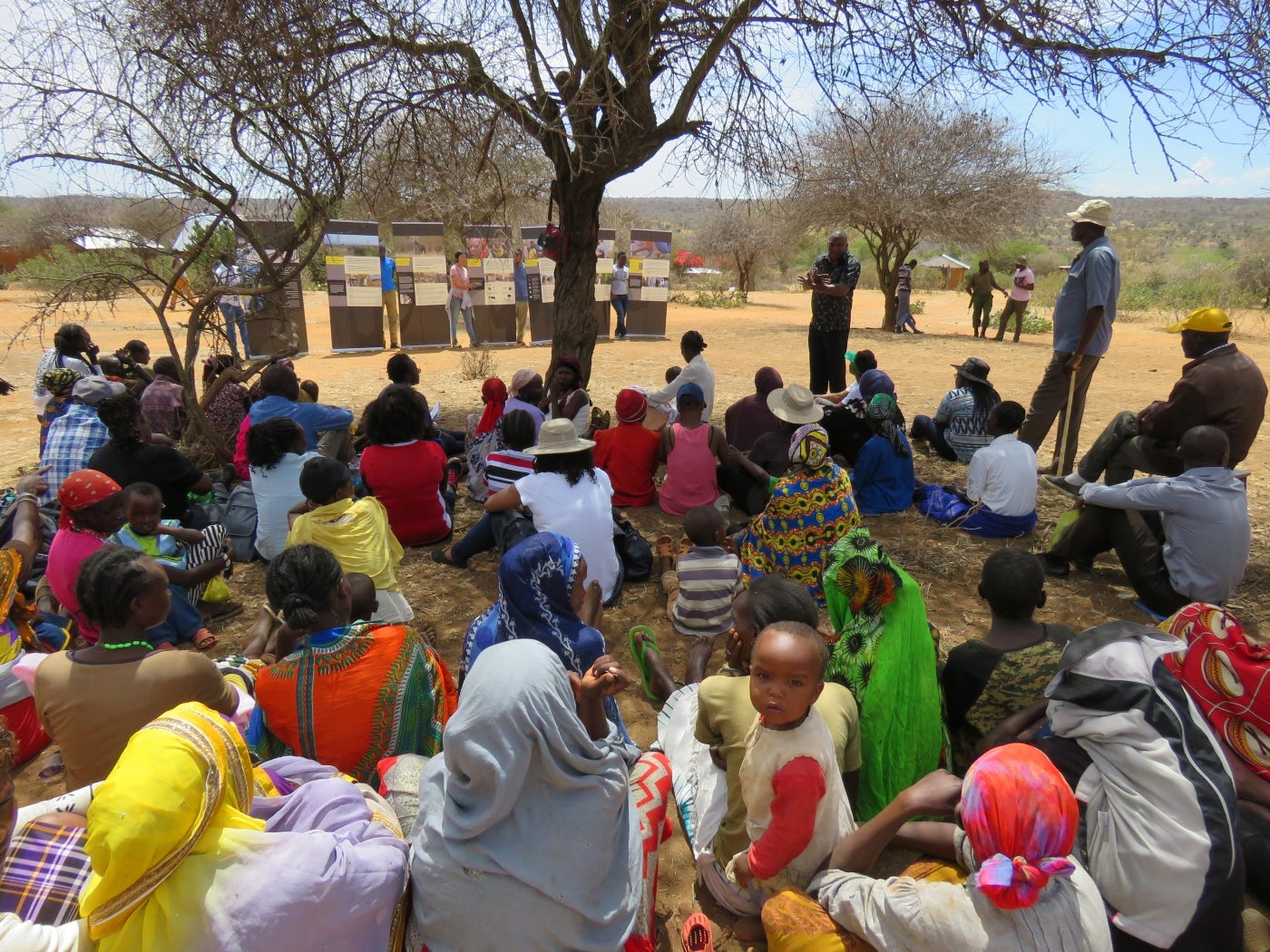
A community presentation in Laikipia County, Kenya.
A group of Kenyan public health graduate students and faculty from Nairobi — the urban capital city of Kenya — also participated in the community education activities, as part of a One Health field course. One Health, or “Afya Moja” in Swahili, is the intersection of human, animal and environmental health.
The students’ professional backgrounds ranged from human and veterinary medicine to the social sciences, environmental policy and rangeland management. Their diverse experience encouraged interdisciplinary collaboration, which is key to building effective public health solutions.
One of our principal visual education aids was a mobile “Outbreak DIY” exhibit developed with tools from the Smithsonian’s National Museum of Natural History. We used the exhibit as a launching point to discuss One Health.
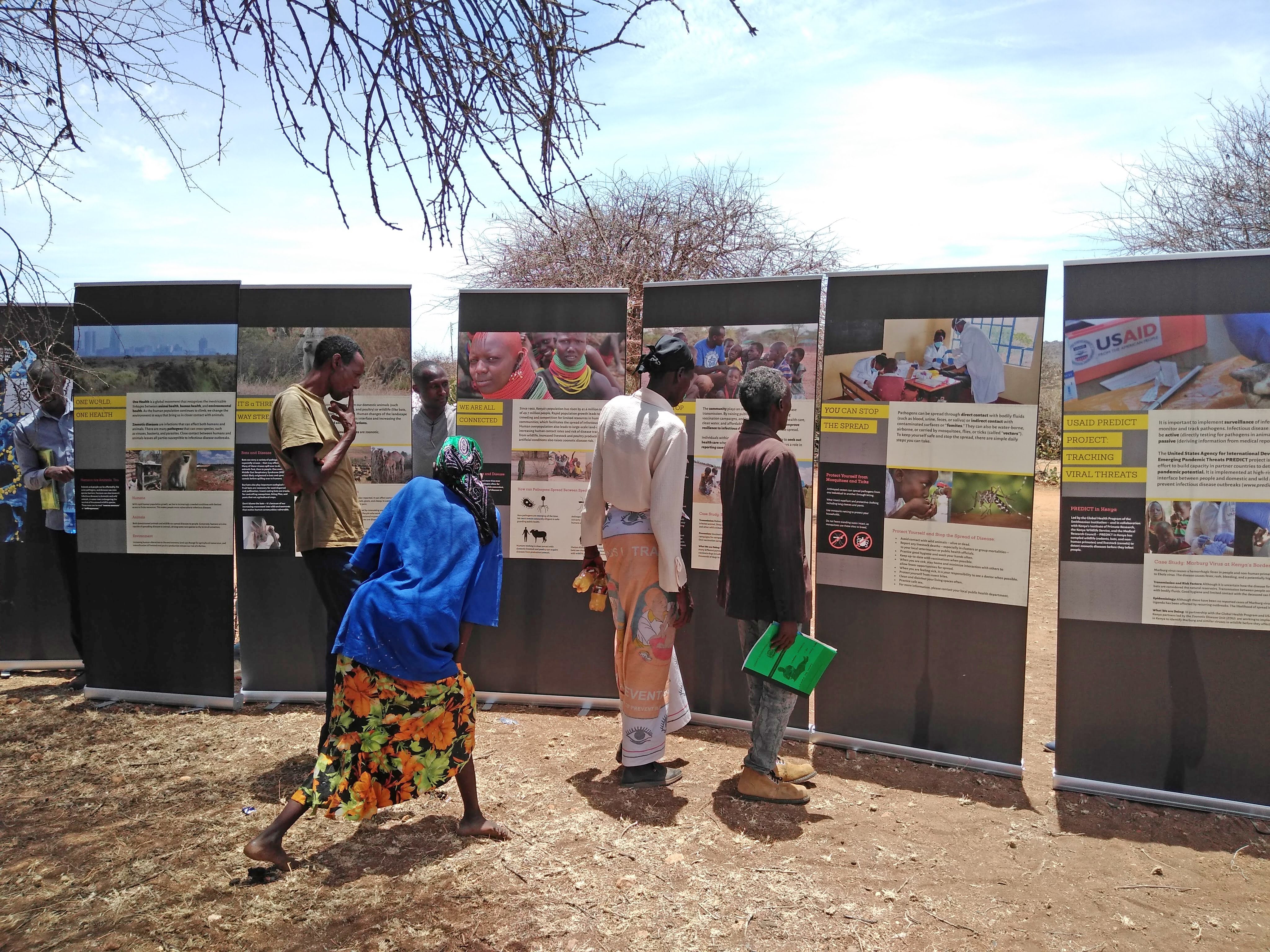
Community members examine the mobile Outbreak DIY exhibit.
The exhibit covered issues that are currently relevant in East Africa and that the USAID PREDICT project had been investigating. The panels displayed regionally significant diseases, such as Rift Valley fever, brucellosis and anthrax. They also showed species of concern, such as camels and baboons, which are common in Kenya and have the potential to pass diseases to humans.
The exhibit helped create a discussion about specific behaviors that can put community members at risk, as well as preventative actions. The visual nature of the displays also encouraged conversation, especially for community members who learned through the images.
Liz and I presented the Outbreak DIY display for the first couple of sessions, but the graduate students assisted in delivering subsequent presentations to the communities that we visited. This helped achieve a few key goals: it resolved some issues with language barriers, it offered a learning opportunity for the graduate students and it ensured that the content was delivered by people who were more familiar with regional health issues.
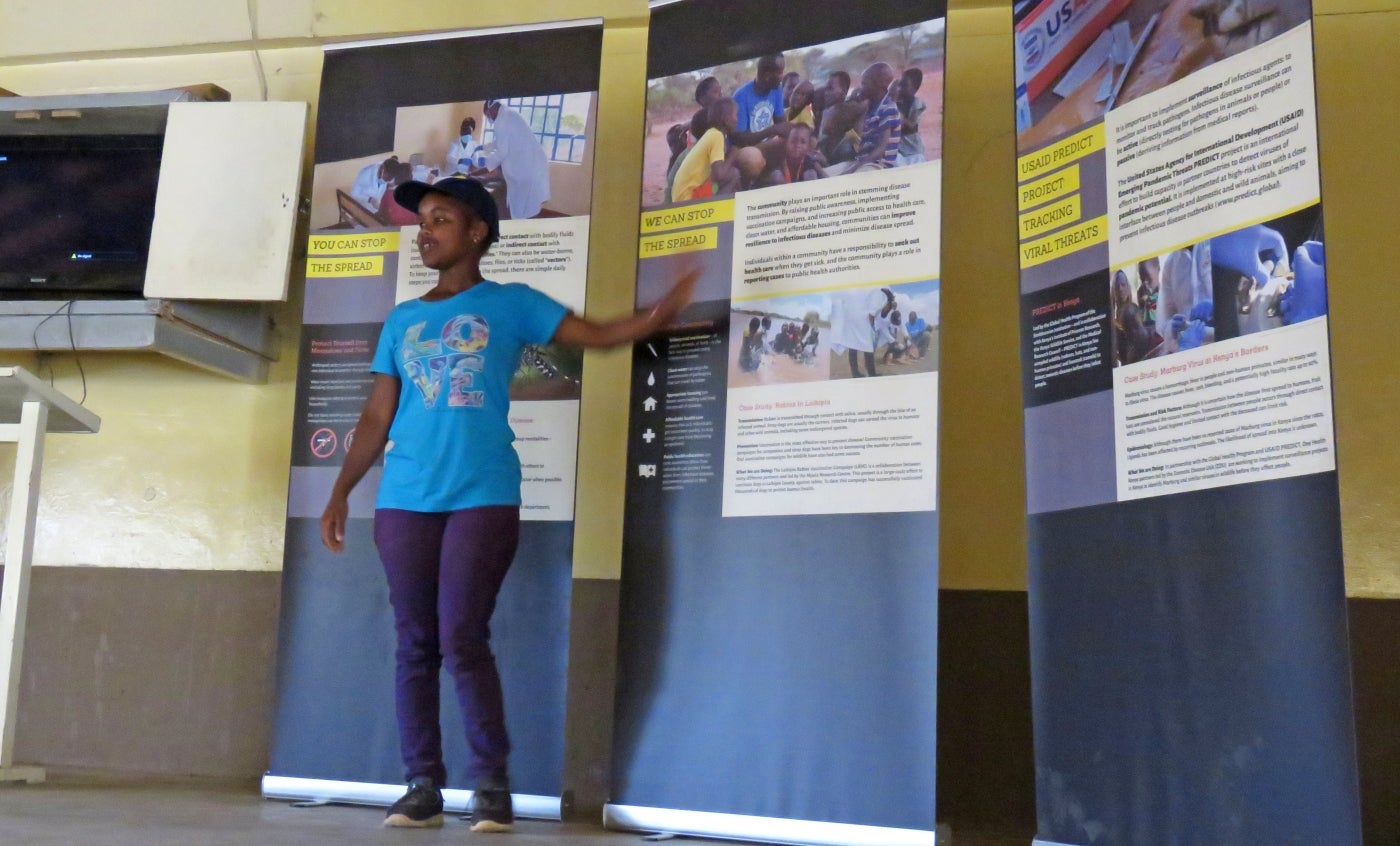
Public health graduate student Caroline Cherotich Mutai presents the Outbreak DIY exhibit.
And of course, education should start early! We also visited primary schools to screen a documentary. The film talks about diseases that can spread from animals to humans, the role bats play and how to stay safe.
We then discussed the movie with the students and answered their questions to help them understand the material. We were impressed by how closely they paid attention, their receptiveness and keen understanding of the topic, and the perceptiveness demonstrated by their questions.
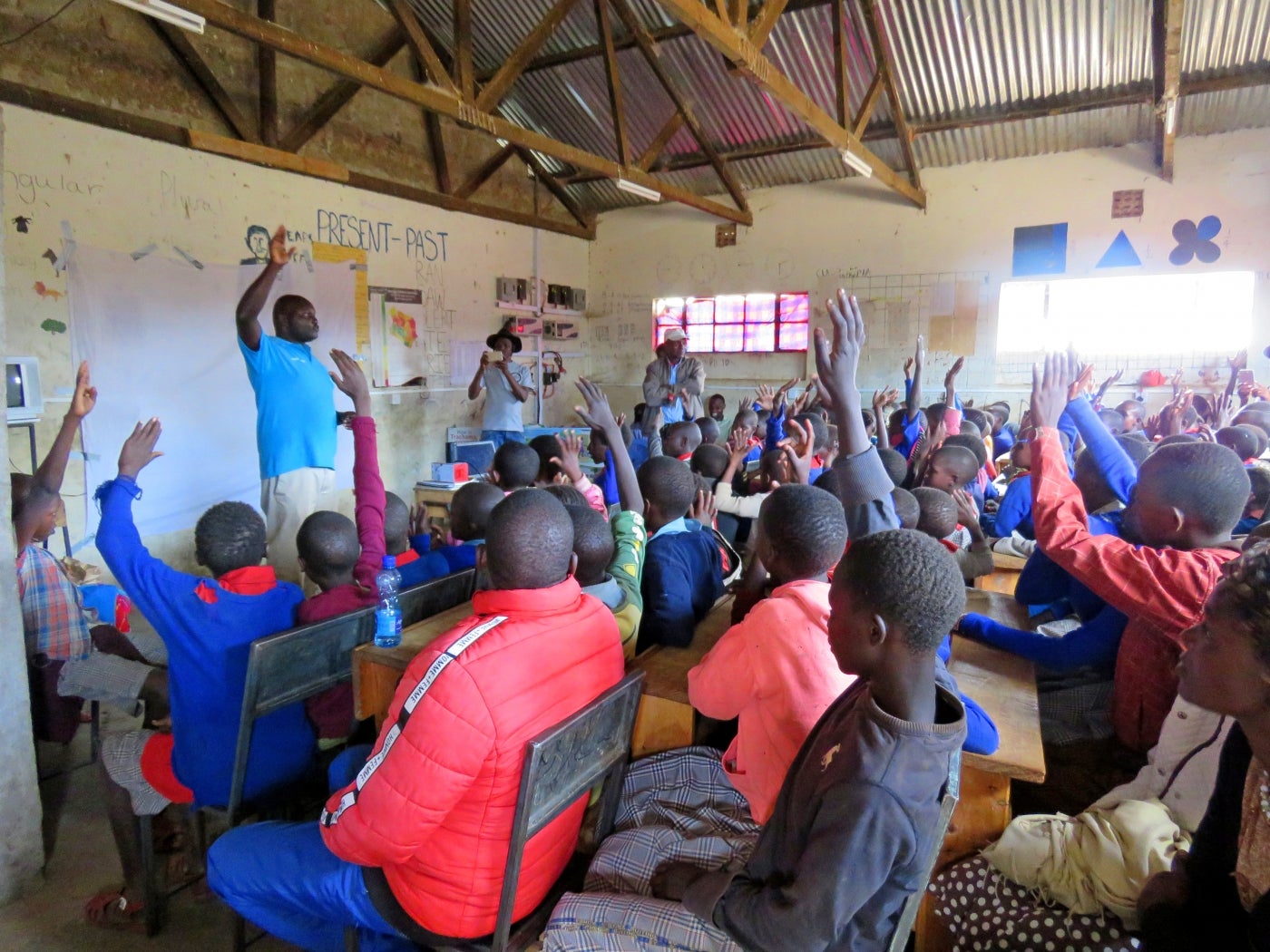
Schoolchildren raise their hands to ask questions after viewing a documentary about zoonotic diseases.
Some students wanted to know about ways to keep safe. Some asked for details on the pathogens shown in the film, such as the Ebola virus. Other students exhibited a scientific inquisitiveness, wondering how many bat species exist and how many diseases they carry.
And the most important outcome: we encouraged students to pursue further education opportunities. Due to distance, low family incomes and pressures from their rural lifestyles, many of the children in the schools we visited don’t have the means to seek higher education. But we wanted to plant the seed of scientific curiosity in these young minds, and we were very encouraged by their willingness to learn.
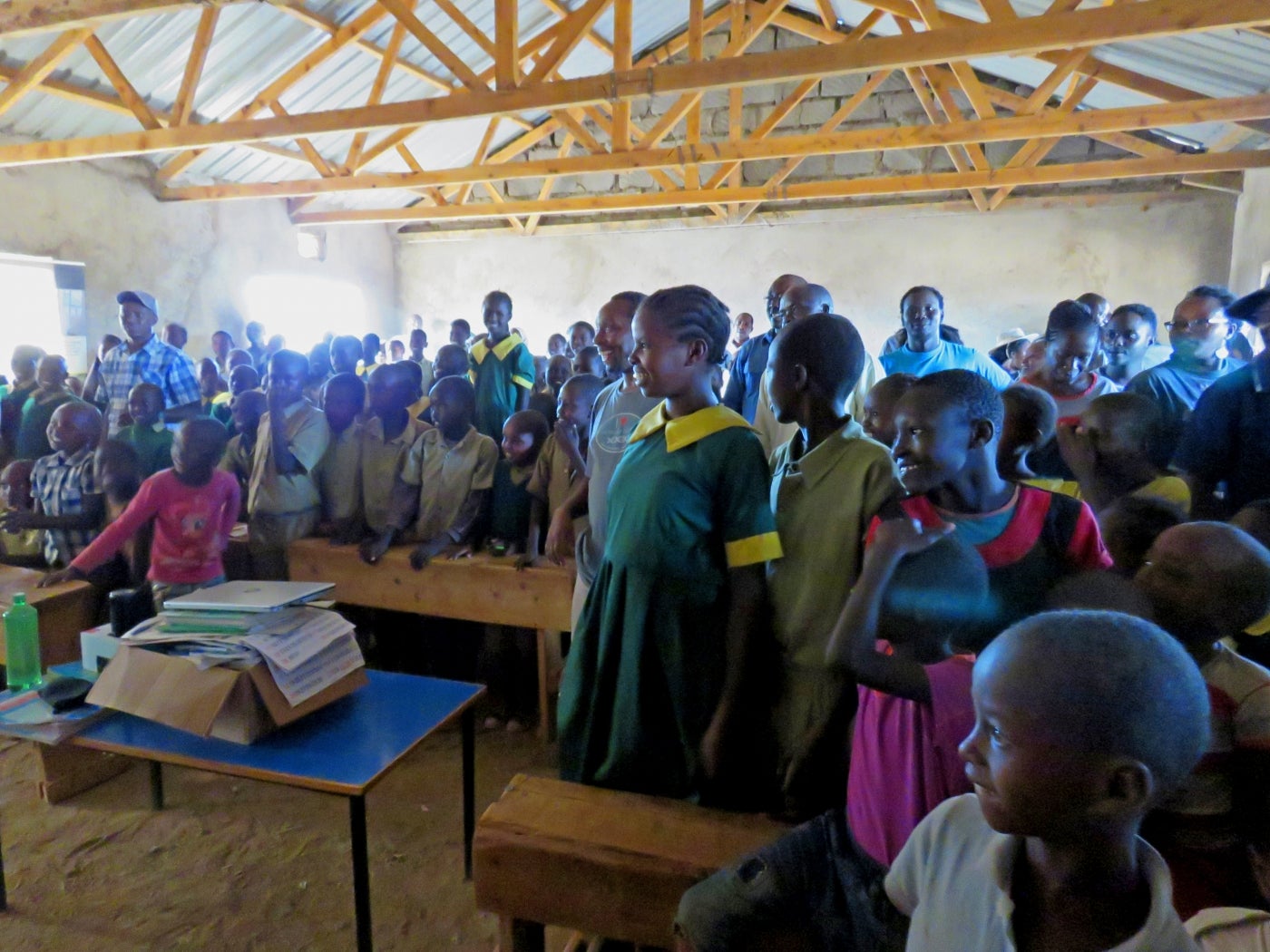
A group of primary school students in a classroom in Laikipia County, Kenya, watch a documentary film about zoonotic diseases.
Lesson Learned: Capacity building is key!
Throughout our experience, Liz and I felt very fortunate to be invited into these communities to participate in educational activities. But we were also very aware that the One Health message may be better received if it comes from those who are familiar with health issues at a local level.
By recruiting graduate students to deliver One Health messaging, we were striving to ensure that the information could be repeatedly and sustainably shared. Our goal is to promote sustainable knowledge transfer, meaning that the knowledge and skills acquired from USAID PREDICT can continue to be shared widely by project participants — including to community members, other researchers and public health professionals not directly associated with the project.
Ultimately, through capacity building, we aim to ensure that tools, techniques, knowledge and skills are in place, so the project’s larger objectives of safeguarding public health and enabling communities to make informed decisions about their own health can continue long after we leave.
Generous core support for the Global Health Program’s training program is provided by the Morris Animal Foundation and Dennis and Connie Keller.
Additional photography for this blog was made possible through the Smithsonian Artist Research fellows program.


